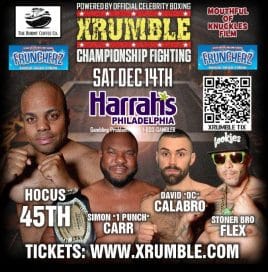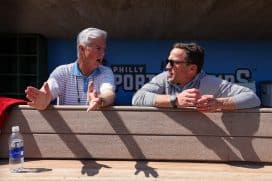Phillies
Top 25 Phillies of All-Time: No. 18 – Ryan Howard
By Tim Kelly, Sports Talk Philly editor
If the formula for this countdown was strictly based on traditional statistics during a five-year stretch of peak dominance, Ryan Howard would be a lock to be one of the top 10 Philadelphia Phillies of all-time, if not top five. But the formula, which factored in both traditional and advanced statistics — meaning it was based on facts — didn't agree.
This formula was designed not to find who at their peak was the greatest player to play for the Phillies — that would have opened the door for players like Roy Halladay and Jim Thome — but rather who had the greatest overall career with the team. So 2007-2011 got the same weight for Howard as 2012-2016 did.
The Phillies organization has existed since 1883, so the idea that putting Howard as the 18th best player for an organization that has existed since Chester Arthur was the president is some type of dis is silly. If anything, having him this high in this old of an organization despite the fact that he posted negative WARs every season from 2012 to 2016 despite one, is a sign of how good he was in his prime.
Career Accomplishments
- Played with Phillies from 2004-16
- Three All-Star Game appearances (2006,2009, 2010)
- 2005 National League Rookie of the Year
- 2006 National League MVP
- Led MLB in home runs in 2006 and 2008
- Led MLB in RBIs in 2006, 2008 and 2009
- Most single-season home runs in team history (58 in 2006)
- Second in franchise history in home runs (382)
- 2009 NLCS MVP
- 2008 World Series champion
*Awards were not factored into the formula
Most memorable moment
While it was difficult to not put his "just get me to the plate, boys" moment against the Colorado Rockies in this slot, Howard's top individual moment came during his 2006 National League MVP season.
Just three days after setting the franchise mark for individual home runs in a season, Howard became the first Phillie to ever hit 50 home runs in a season, slugging three home runs on the afternoon of Sept. 3, 2006.
The Phillies didn't make the playoffs in 2006, but Howard's MVP season, along with him winning the home run derby, seemed to signal their rise to national relevance.
Reasoning for ranking
Howard's overall point evaluation on this scale was a 26, which actually tied him with Cole Hamels, Curt Schilling and Cy Williams. Matt Albertson and I, who created the formula, believed that for the most part we should allow the formula to speak for itself, but in this instance, or where otherwise obvious, we did have the discretion to slightly alter the rankings where scores were close.
This countdown is likely to be looked down by some based on Howard's ranking, though the reality is that Howard was bumped above three with the same score as him — including a World Series MVP — and put in this position based off of his own numbers. There was no internal agenda to discredit Howard.
While Howard smashed 198 home runs between 2006 and 2009, and was a core member of the greatest run in franchise history, he was still a very flawed individual player. Only twice did he post a WAR above four, and both the eye test and advanced metrics suggest that even at his peak he was a below-average fielder, if not worse.
It's worth noting, though the formula is explained more in-depth later in this post, that WAR was not the only statistic used for this countdown. Had it been Howard wouldn't have even been in the top 25.
Previous entries to the countdown
- No. 25, Garry Maddox
- No. 24, Roy Thomas
- No. 23, Gavvy Cravath
- No. 22, Chris Short
- No. 21, Cy Williams
- No. 20, Curt Schilling
- N0. 19, Cole Hamels
Explanation of scientific formula
The player rankings formula combines both traditional and advanced statistics/metrics and assigns a point total to each category. These statistics only reflect the player's Phillies career.












































